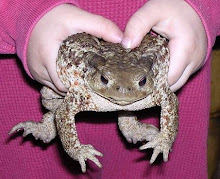Here are two versions of a small print I've been working on.
They are about 4" x 8" in size.
The first is printed on a small fragment of my home-sized Japanese paper;
the second is on Magnani a handmade,190g/m2 watercolor paper that I've been trialing to see if it would work as a locally available paper.
The shape is based on a rug motif from a small Baluch pile woven bag that I pulled out of storage recently. This is a close up of a small pillow bag or balisht, woven by the Baluch--a nomadic tribe that inhabit parts of what are now Pakistan, Iran, and Afghanistan. Balisht were/are small bags, woven in pairs that were part of a young woman's dowry and would have been used for head pillows or storage. Old ones are still found in pristine condition suggesting that they are not used but stored away as valued items. This one has a repeating motif of double headed arrows on a camel wool ground.
I had this motif in mind when I carved the 6-7 blocks for this little print.
It was designed to be able to play with overlapping colors--blue over yellow/red over yellow, etc and there are positive and negative blocks so I can alternate the order of printing and the effect.As with my other attempts to recall textile/rug pieces in moku hanga the results are only mediocre. It's a simple image but the prints are still too flat and the colors not nearly saturated or rich enough.
I do like however the surface I did manage to get--especially on my Japanese paper.
I also allowed the uncarved areas to print at the edges, and overprinted in tinted washes to try to get some layering and depth.
Friday, December 30, 2011
Imagining Baluchistan
Labels:
arrow,
balisht,
Baluch,
hand pulled print,
moku hanga,
printmaking,
ukiyo-e,
woodblock,
woodblock print
Subscribe to:
Post Comments (Atom)




Warms my heart to see weaving turned into printmaking, as I do both. 8-]
ReplyDeleteI exchanged the bag photo for a better one.
ReplyDeleteIt is probably over 100 years old--sadly the moth damage is more recent.
The tan is camel wool. the red is tinted with Madder root and typical of Baluch weavings--a really dark purple is placed against a metal/blue green. There is also some yellow/gold in the eyes of the arrows. The warps are goat hair and the weft and pile very soft sheep wool.
I like how this shows the difference of the same print on different papers. The texture and vibrancy achieved on the Japanese paper is really nice.
ReplyDeleteHappy New Year Andrew!
They are all printed differently so some of the difference is more which color was overlayed on top. There is no magenta on the bottom one, just a deliberate grey/mauve.
ReplyDeleteIt printed pretty well but is definitely less bright/transparent.
I'll do some more printing with both soon to play a bit more with strengths and weaknesses.
Also Magnani has their mill not far from here and I hope to visit and try to get samples of their other handmade papers to try out.
I'm still working on my Maple branch print and need papers even just for proofing.
Magnani Pescia cream is probably my favorite paper for etching. It has such a buttery feel to it. I will have to try it with some blocks. Nice to have the mill so close by!
ReplyDeleteThe Pescia is I think unsized or very lightly sized. They also make some handmade watercolor sheets that are 190g/m2--one was available at the art store here but they make another that I'd like to try---as it has a very smooth finish.
ReplyDeleteI've also used Fabriano Artistico--works ok. Hope to find the 90g/m2 as the lighter papers would work better.